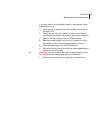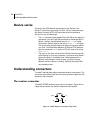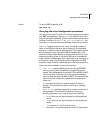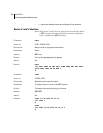
CHAPTER 4
Performing Advanced Functions
26
• Command is the string representing the original command. It is
supplied so that a master can distinguish between the
answers it is waiting for, and out-of-band notifications (which
may come, for example, over the radio port of a node). As
with the ID, the command name must be always supplied.
• Result1 Result2 ... ResultN are the result values
returned by the remote node. If the ErrResult is not zero,
all other possible characters and/or strings until the end of the
line may be ignored.
• ErrResult shows whether the command was successfully
executed. If this value is 0, the command was successfully
executed. If this value is other than 0, the command failed.
The number may further indicate the error type. (See also
“Returned errors list” on page 54.)
The answer string may contain any number of spaces or CR/LF
characters between its components; however, after the terminator
(#) no other characters are allowed.
Using terminal commands
Following is a list of available commands and an explanation of
their use.
Note that for Series 1 devices, you preface a change in a setting
with SET, while with Series 2 devices you do not.
Note: You can type uppercase or lowercase characters because the
commands are not case sensitive.
Series 1 devices
The SET series of commands
COMMAND SET OWNID nnnn
DESCRIPTION Sets the identification of the unit.
PARAMETERS nnnn is the ID number of the unit.
RETURNS Nothing.
REMARKS The ID number must be identical to the one written on the unit’s
label.


















